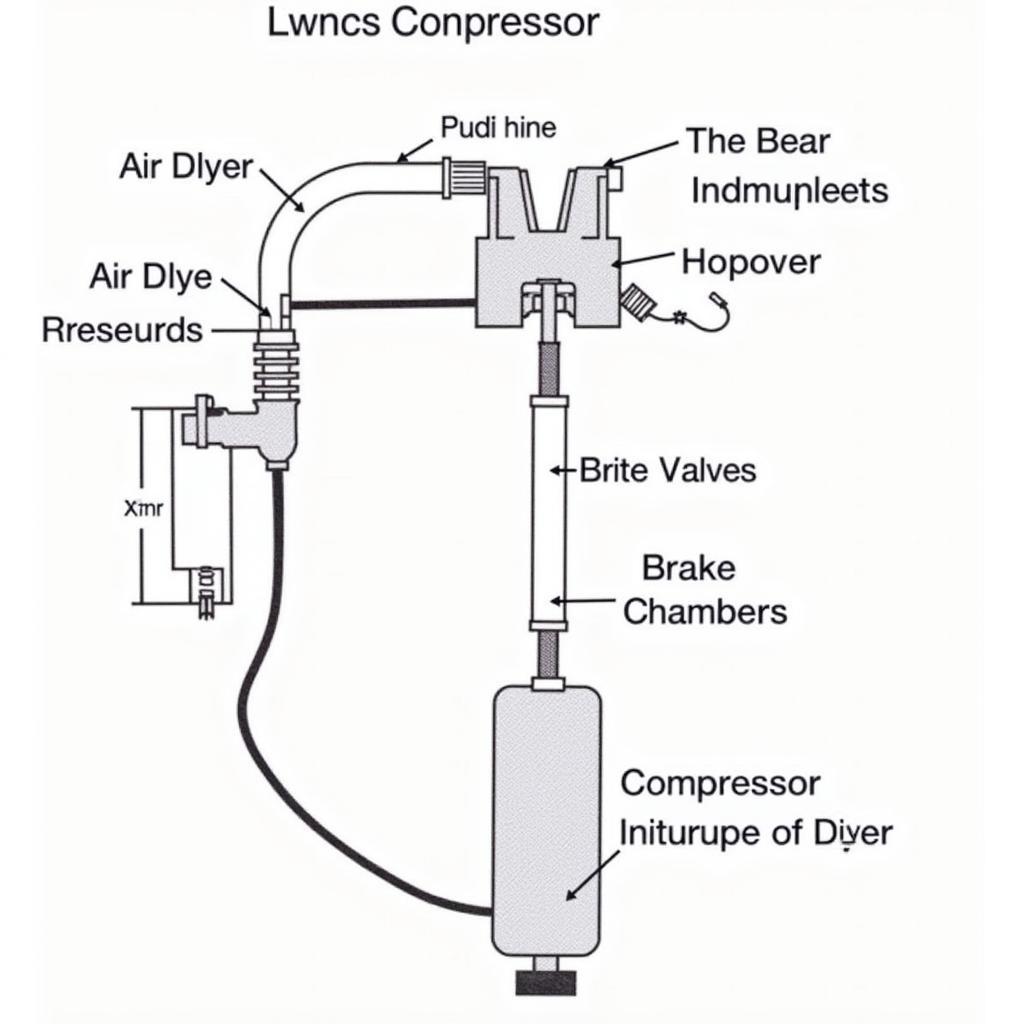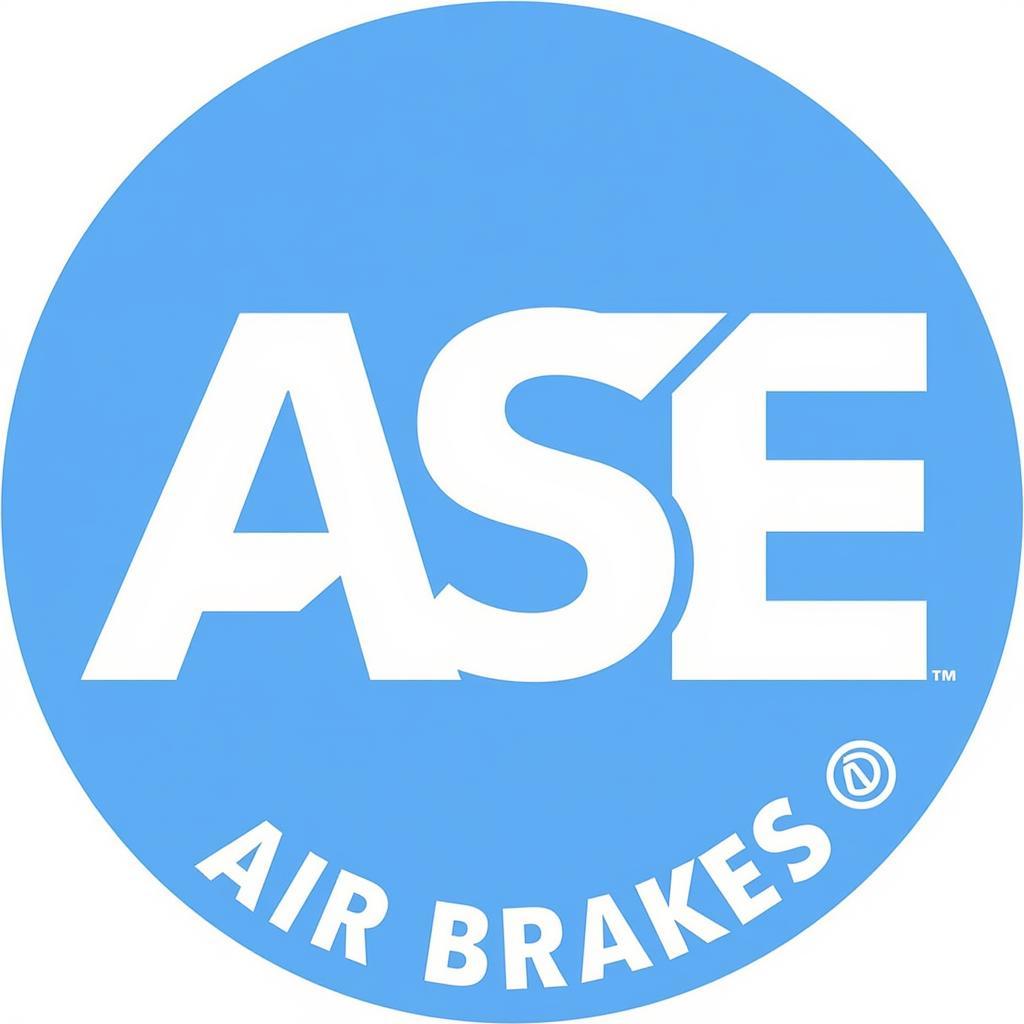Are you preparing to take the ASE certification exam for air brakes? Understanding the complex systems that make up air brakes is crucial for ensuring the safety and efficiency of large vehicles. This study guide provides a comprehensive overview of the essential concepts, components, and regulations related to air brakes, equipping you with the knowledge and confidence to excel in your ASE exam.
Delving into the World of Air Brakes
Air brakes are the primary braking system found on heavy-duty vehicles such as trucks, buses, and trailers. Unlike hydraulic brakes that use brake fluid to transmit force, air brake systems utilize compressed air to apply and release the brakes.
 Diagram of an Air Brake System
Diagram of an Air Brake System
This system offers several advantages over hydraulic brakes, particularly for heavy vehicles:
- Increased Braking Force: Compressed air provides a greater force multiplier compared to hydraulic fluid, allowing for the stopping of much heavier loads.
- Fail-Safe Mechanism: In case of air pressure loss, spring brakes are automatically activated, bringing the vehicle to a safe stop.
- Longer Lifespan: The use of air as the operating medium reduces wear and tear on components, resulting in a longer lifespan.
Key Components of an Air Brake System
To effectively understand how air brakes work, it’s essential to familiarize yourself with the key components:
- Air Compressor: The heart of the system, the compressor draws in air and compresses it to a high pressure.
- Air Dryer: This component removes moisture from the compressed air, preventing corrosion and freezing within the system.
- Reservoirs: These storage tanks hold the compressed air until it is needed for braking.
- Brake Valves: These valves control the flow of compressed air throughout the system, responding to the driver’s brake pedal application.
- Brake Chambers: Located at each wheel, brake chambers convert the compressed air into mechanical force, pushing the brake shoes against the drum or pads against the rotor, thus slowing down or stopping the vehicle.
Types of Air Brake Systems
While the fundamental principles remain similar, there are two primary types of air brake systems:
- Conventional Air Brake Systems: These systems utilize a single air line to both supply air to the reservoirs and control the brakes.
- Air-Over-Hydraulic (AOH) Systems: In this setup, compressed air is used to activate a hydraulic master cylinder, which then applies the brakes hydraulically. This system is commonly found on vehicles with hydraulic brakes on the front axle and air brakes on the rear axles.
Mastering Air Brake Safety: Regulations and Inspections
Due to the critical role air brakes play in vehicle safety, stringent regulations and inspection procedures are in place. Understanding these regulations is essential for passing your ASE exam and ensuring your actions comply with safety standards.
Regular inspections and maintenance are vital for optimal air brake system performance. Here are key areas to focus on:
- Leakage Test: Checks for any leaks in the system that could compromise braking efficiency.
- Brake Adjustment: Ensures the brakes are properly adjusted to provide even and effective braking.
- Component Inspection: Visually inspecting all components for wear and tear, including hoses, lines, and valves.
ASE Air Brakes Certification: Your Path to Expertise
 ASE Air Brakes Certification Logo
ASE Air Brakes Certification Logo
The ASE (Automotive Service Excellence) certification for air brakes validates your knowledge and skills in this specialized area. Achieving this certification demonstrates your commitment to professional excellence and can enhance your career prospects in the heavy-duty vehicle service industry.
Resources to Prepare for the ASE Air Brakes Exam:
- Manufacturer Service Manuals: Provide in-depth information on specific air brake systems.
- ASE Study Guides: Offer structured content and practice questions aligned with the exam objectives.
- Online Resources: Utilize websites and forums dedicated to heavy-duty vehicle repair and ASE certification.
Conclusion: Embrace the Challenge, Become Air Brakes Certified
Successfully mastering the complexities of air brake systems requires a blend of theoretical knowledge and practical skills. This comprehensive study guide has equipped you with the foundational understanding necessary to approach your ASE exam with confidence.
Remember, achieving your ASE certification is not just about passing an exam; it’s about upholding the highest standards of safety and service in the heavy-duty vehicle industry. Embrace the challenge, dedicate yourself to learning, and embark on a rewarding career path as an ASE-certified professional.
Need Further Assistance?
For personalized support and guidance on your ASE Air Brakes certification journey, contact us at:
Phone Number: 0369020373
Email: [email protected]
Address: Thon Ngoc Lien, Hiep Hoa, Bac Giang, Vietnam
Our dedicated team of experts is available 24/7 to provide comprehensive assistance and address your queries. Let us empower you to excel in your ASE endeavors.
